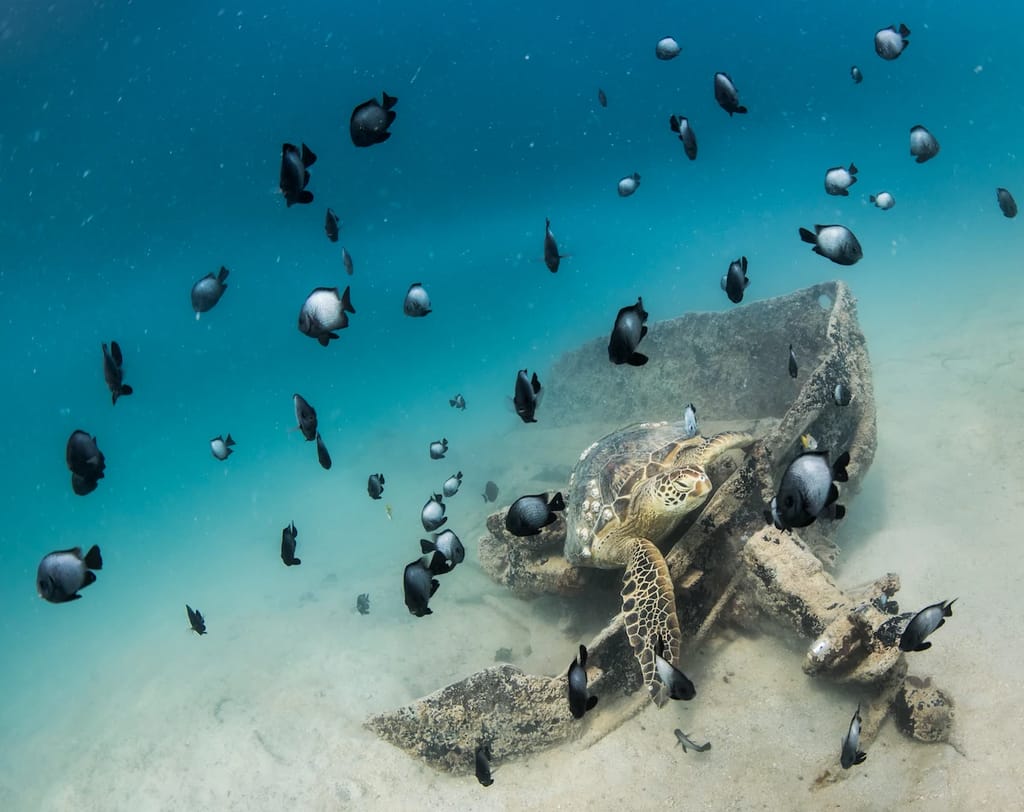I live in a city, and even though I’m surrounded by man-made streets and buildings, I’m still part of a rich ecosystem. The trees outside my house help cool my neighborhood, improve water quality and can even have a lasting effect on my sense of community. The flowers I plant in my garden can provide nutrients for butterflies, birds and bees. These small interactions with the natural world remind me of the big impact humans can have on the environment.
Earlier this year, a paper was published that showed the extraordinary way ecosystems are connected, and it featured a character well known to urban dwellers like me: the rat. Where humans go, so go these rodents and, unfortunately, that has had devastating effects in small tropical islands. Specifically, some islands in the Indian Ocean have seen a decline in bird populations due to rats sneaking into their nests and eating unhatched eggs. This can lead to a dramatic decrease in the number of seabirds on the island.
Want to learn more about ocean animals?
Sign up to receive our emails.
document.addEventListener(‘DOMContentLoaded’, function() {
const form = document.getElementById(’email-signup-6442e5b93b490′);
form.querySelector(‘.rsform__field–email’).addEventListener(“nb:result”, e => {
const nbStatus = form.querySelector(“[name=”nb_email_status”]”);
const nbDate = form.querySelector(“[name=”nb_validation_date”]”);
const tokenField = form.querySelector(“[name=”token”]”);
const currentDate = new Date();
nbStatus.value = e.detail.result.response.status;
nbDate.value = currentDate.toISOString().split(‘T’)[0];
grecaptcha.enterprise.ready(async () => {
const token = await grecaptcha.enterprise.execute(‘6Lcmr3shAAAAAAVRlvJrsUufEEQuItzNDlkpmB2g’, {action: ‘verify’});
tokenField.value = token;
});
});
});
<!– –>
So, what does this have to do with the ocean? This decline in bird populations caused by invasive rats can impact jewel damselfish living in coral reefs. These damselfish and many other reef fish rely on nutrients that come from (there’s no pleasant way to say this) bird poop. When there are fewer birds, there is less bird feces, and thus damselfish must do a lot more work to find the nutrients they need to survive.
Damselfish are feisty. They are known as “algae farmers” because they nibble away at the habitat to cultivate algae growth. They are fiercely protective of the patches of algae they cultivate because these patches are very nutritious, largely due to bird feces that wash into the ocean from nearby islands. If damselfish take after the movie character Rocky, then this alga is their Adrian. However, when there are fewer birds, there are fewer nutrients, which makes algae patches not worth the fight. The study conducted this year found that damselfish near islands with invasive rat populations were five times less likely to act aggressively.
The impact of these rats doesn’t end there. The algae farming of the damselfish is incredibly important to the health of coral reefs. They help keep the algae and coral in balance, and this change in behavior could upset that balance. The damselfishes’ lack of aggression might also affect the behaviors of other fish, and further study might reveal even more behavioral changes on the reef. Plus, damselfish are just one species of many creatures that rely on algae so the decrease in nutrient quality might impact other parts of the food chain. This study followed one chain reaction, but our planet is so connected that upsetting one natural process can impact a whole host of other living systems.

if(typeof window.oc_media_credits === ‘undefined’) {
window.oc_media_credits = {};
}
window.oc_media_credits[68608] = “Toby Matthews / Ocean Image Bank”;
The study also shows the many unintentional ways humans impact our planet. For me, it is a reminder that what happens in our communities can impact lives far beyond what we can see. For instance, when I join volunteers at the International Coastal Cleanup® to clean up a beach or a riverbank, I can help prevent plastics from ending up in ocean habitats thousands of miles away.
The ocean connects us, which means our actions have a ripple effect throughout our planet. We often read stories like this one about the harmful human impacts on our planet, but we can also take action to protect our environment. You can take a moment now, sitting wherever you call home, to take action and protect creatures throughout our ocean.
The post From Rats to Feisty Damselfish appeared first on Ocean Conservancy.

